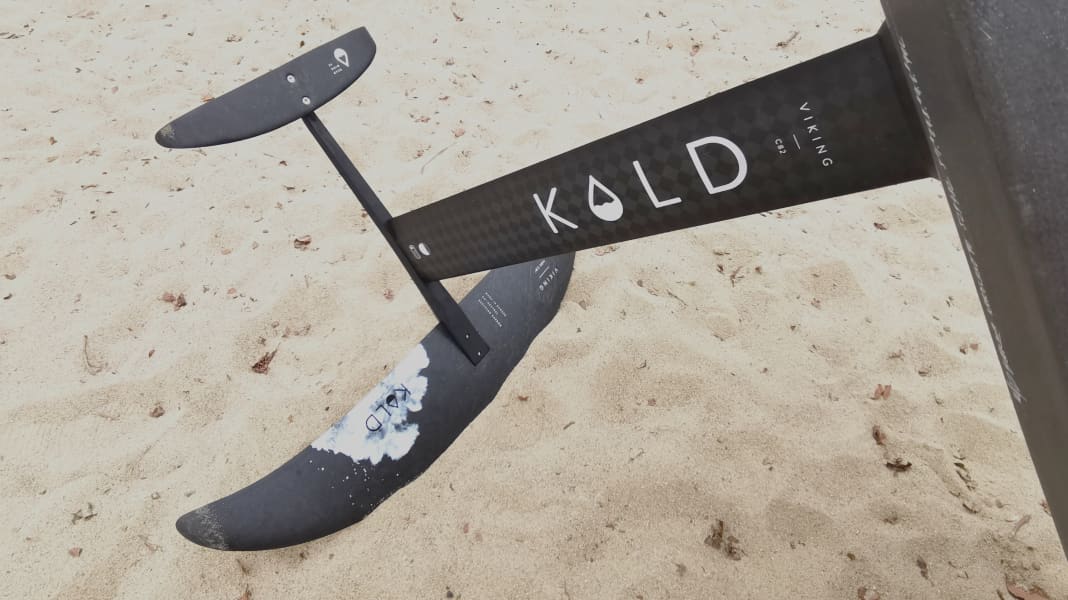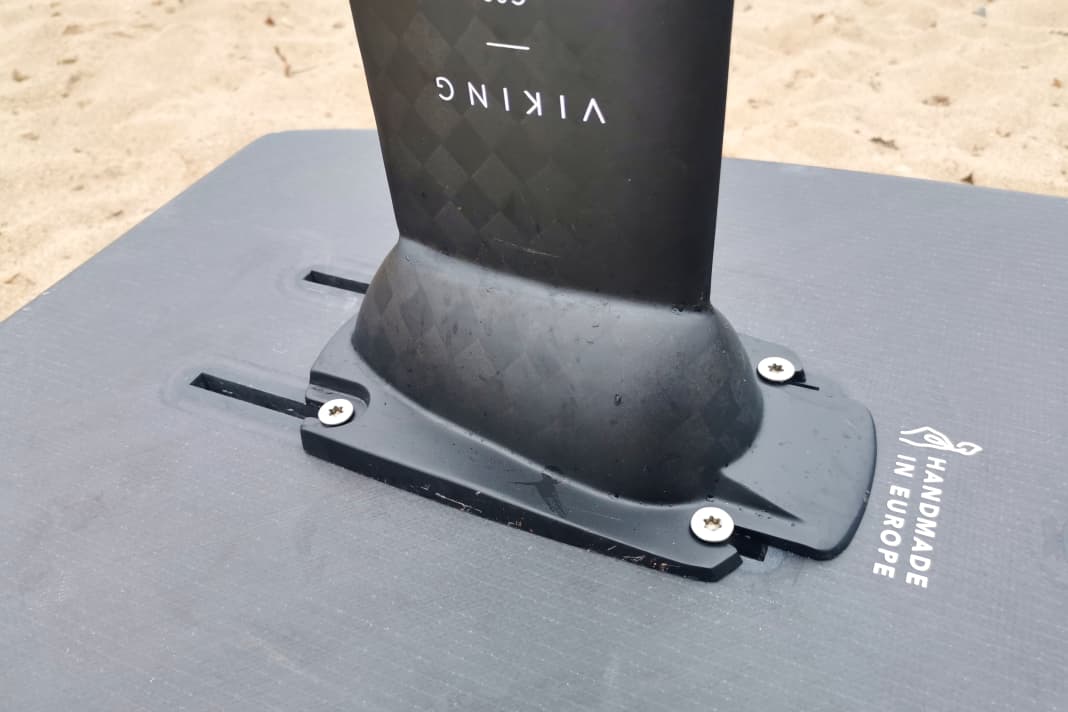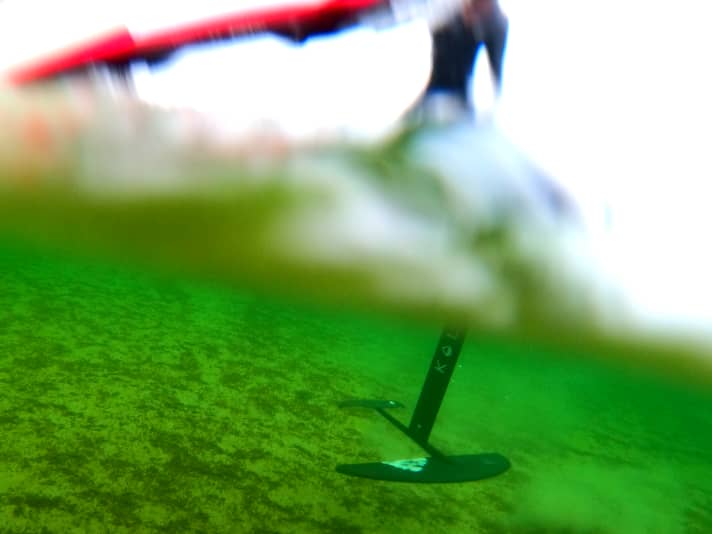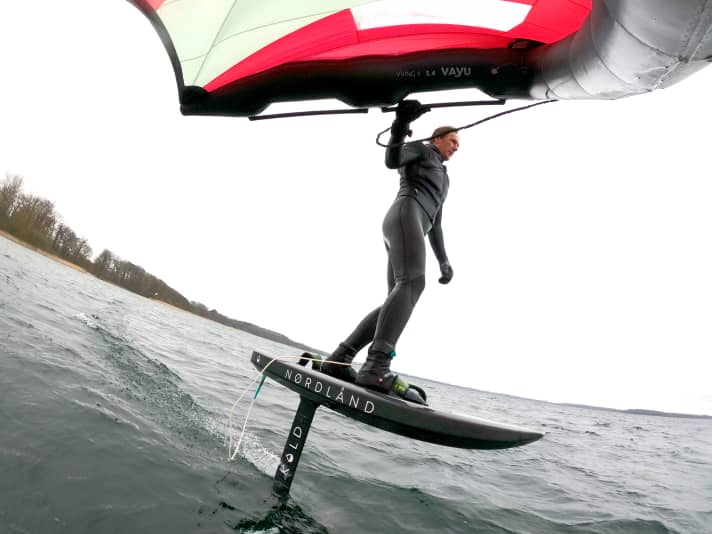
Kold-Shapes relies on the following materials in the manufacture of its boards ( HERE there's a test of the Nørdland model) and foils are produced as sustainably as possible: they are manufactured in Europe, recycled carbon is used and the CO2 released during production and transport is "offset" by co-financing compensation measures through the purchase.
The Kold-Shapes Viking Foil on land:
The Viking model is available with a total of six different front wing sizes - 960/1220/1400/1680/1960 & 2260 cm2. In addition, two different fuselages are available - a 72 cm length("Large")which is recommended by the manufacturer primarily for intermediates and heavy wingsurfers (>85 kilos), as well as the rather short 58 centimetre version("Medium"). All components such as wings, fuselages and masts are compatible and can be replaced individually.






The 82 mm carbon mast merges directly into the mounting plate, which is why the mast offers a high degree of rigidity. The wing and fuselage are screwed together using M8 Torx screws. The rest of the equipment is also impressive - a matching bag and cover for the front and back wing are included in the scope of delivery, and all parts also appear to fit very precisely.
We tested the Kold-Shapes Viking Foil in sizes 1680 and 1400 cm2 in combination with the 58-centimetre fuselage in various conditions. With 3.67 kilos measured by us, the Kold-Shapes Viking 1400 (1689 euros) is one of the lightest foils on the market, as is the foil with the 1680 cm front wing (1729 euros), which is even marginally lighter at 3.53 kilos.
If the foil with carbon mast is too expensive for you, the set is also available with a 75 mm aluminium mast. Cost saving: 300 euros.

On the water:
The Kold-Shapes Viking Foil 1680 starts flying at a comparatively low basic speed, the take-off is quite harmonious and without any unplanned surprises. Due to the short fuselage, it can be pumped efficiently with little power, and if you have some practice and technique, the Viking Foil can deliver very good light wind performance with an early take-off. However, you will immediately notice that the foil needs to be loaded sensitively; the Kold-Shapes Viking 1680 turns out to be very agile and easy to turn around both the longitudinal and transverse axis. Those who have had little practice will find it a little difficult at the beginning to fly stably around all axes, as the foil also converts small steering impulses (and incorrect loads) 1:1. On the other hand, this results in above-average suitability for tight foil manoeuvres and small turns on swell or surf waves.

In manoeuvres, the foil remains stable even when the speed drops - ideal for foil 360s or other manoeuvres. We would describe the speed level of the foil as "average", and the speed limit is definitely noticeable in strong gusts. However, the Viking Foil always remains stable and hardly tends to climb uncontrollably. In principle, this characteristic can also be found 1:1 in the 1400 front wing we tested - always in comparison with foils of the same size from other brands.
First jumps and freestyle tricks are also possible with the 1680 and of course with the Viking 1400, here you benefit from the stiff basic characteristics of the foil and also from the low weight, which keeps the flywheel mass pleasantly low during rotations.

Conclusion:
The Kold-Shapes Viking is a lightweight and extremely agile foil with a short fuselage that is particularly suitable for experienced wingsurfers who rely on light-footed manoeuvres and turns in the waves. We would recommend the foil with the longer fuselage for beginners and intermediates as well as heavy riders (>90kg). If you are looking for maximum stability and the best possible top speed when freeriding, you won't be 100 per cent happy. If in doubt, you can choose a smaller front wing for tricks - thanks to the good light wind performance, you can still get going early and then benefit from the higher top speed that small wings naturally offer.
Weight, agility, wave suitability
Flight stability (with the short fuselage)

